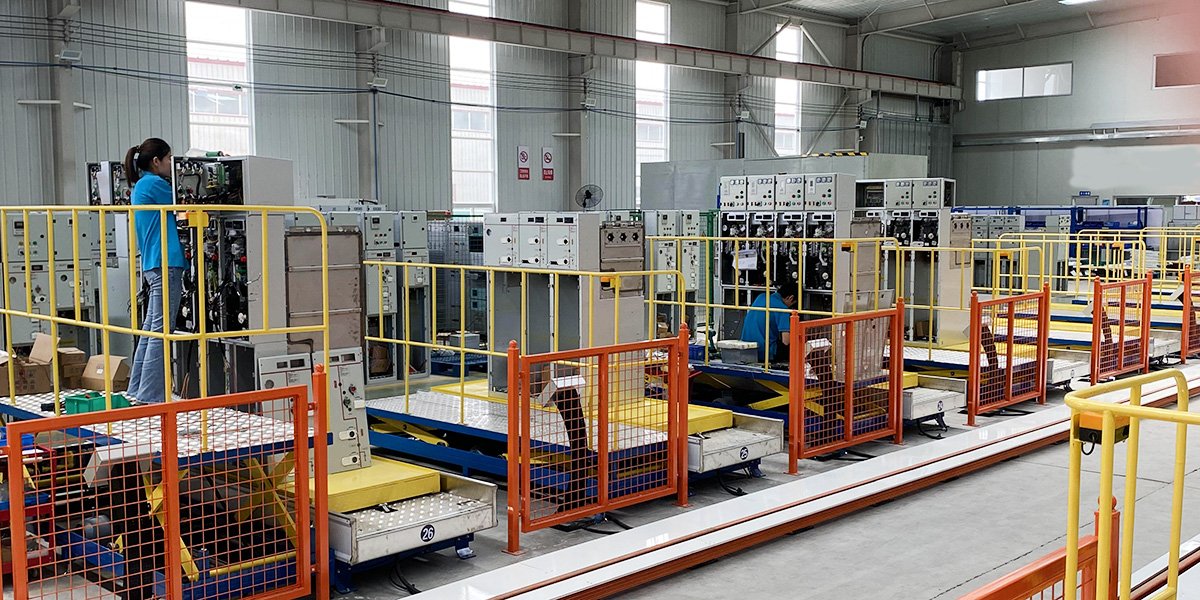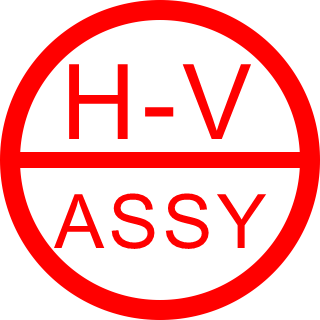Environmentally friendly ring main unit production line

The eco-friendly ring main unit (RMU) production line utilizes automated machinery and information management systems to achieve a fully automated process from component processing to final assembly. It is highly adaptable and responsive to market changes, ensuring efficient, high-quality production while minimizing environmental impact.
Environmental-friendly ring main units (RMUs) are power equipment that use dry air or other eco-friendly gases as insulating media, focusing on environmental protection and sustainability in their design and manufacturing processes. Here is an overview of the structure, assembly and testing process, and assembly production line for environmental-friendly RMUs:
Structural Features:
- Insulating Medium: Utilizes dry air or other eco-friendly gases instead of traditional sulfur hexafluoride (SF6) gas to reduce greenhouse gas emissions.
- Switching Structure: Includes vacuum switches and three-position isolating switches, with two layout schemes based on the installation position, known as the busbar side and line side arrangements.
- Safety Interlock: The design incorporates electrical safety interlock features to ensure operational safety.
- Insulation Performance Optimization: Insulation performance is enhanced by adding insulating covers, insulating partitions, and insulating umbrella skirts.
Assembly and Testing Process:
- Component Preparation: Gather all necessary parts and components.
- Assembly: Assemble the various parts of the RMU in a predetermined sequence and method.
- Performance Testing: Conduct power frequency withstand tests, lightning impulse tests, and partial discharge tests on the assembled RMU.
- Gas Chamber Leak Detection: Ensure the hermeticity of the RMU to prevent the leakage of insulating gas.
- Withstand Voltage Testing: Perform power frequency withstand voltage tests to verify the insulation strength of the RMU.
Assembly Production Line:
- Automated Equipment: The production line is integrated with automated machinery and intelligent manufacturing systems to achieve full-process automation.
- Information Management: The production line includes MES (Manufacturing Execution Systems) and material management systems for automatic information transfer, enhancing production efficiency.
- Customized Design: The production line can be customized and adjusted according to different product requirements.
- Flexible Manufacturing: The production line is designed with manual inspection stations, or downgraded positions, to handle automation equipment failures, ensuring continuous production.
- Quality Control: Only products that pass the inspection are released from the line, ensuring product quality.
The design, testing, and production processes of environmental-friendly RMUs reflect a commitment to environmental protection and meet the demands of modern power systems for efficient, reliable, and safe equipment. By adopting eco-friendly insulating media and advanced automated production lines, these RMUs contribute to the development of green power grids and sustainable development.
